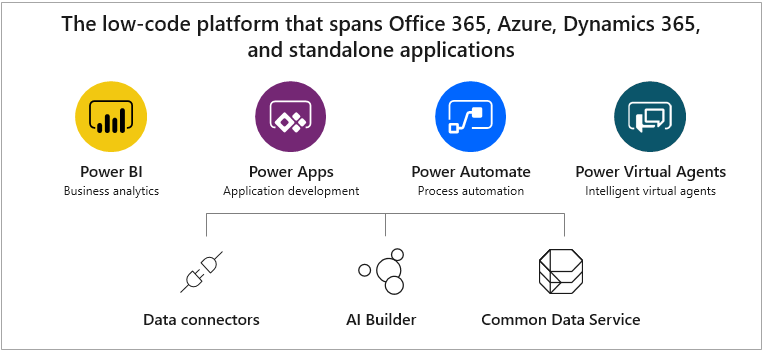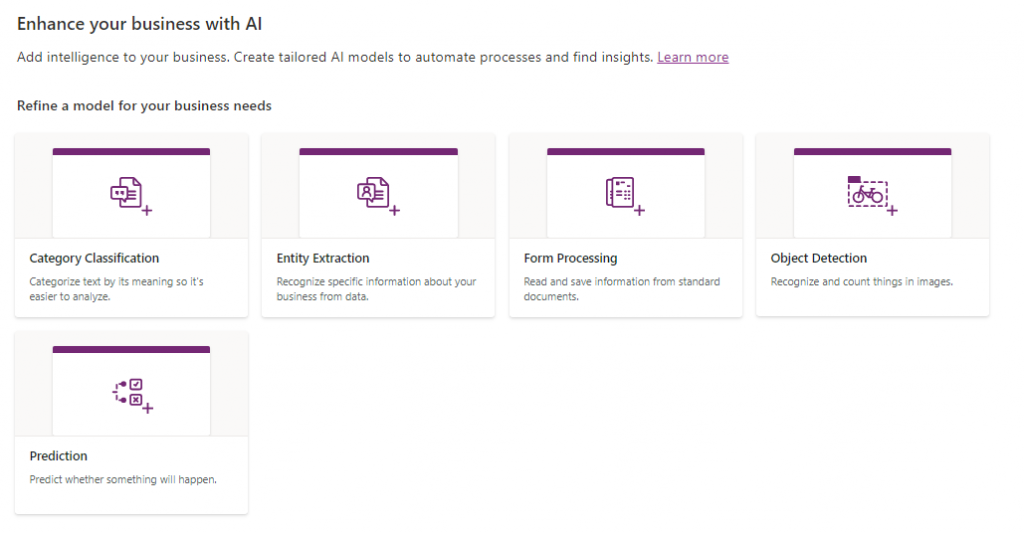What is Microsoft Power Platform? It is a low code development software as a service (SaaS) platform which can be used to build an end to end business solutions by connecting Power Apps, Power Automate, Power BI and Power Virtual Agents together with Office 365, Dynamics 365, Azure, and hundreds of other apps.
The main components of the Power Platform are:
- PowerApps
- Power Automate
- Power BI
- Power Virtual Agents
- Data connectors
- AI Builder
- Common Data Service

Power Platform has 275+ connectors that help you connect to different data sources. You can use an on-premises data gateway to connect to on-premise data (data that isn’t in the cloud).
Let’s start with an introduction to these individual products and their role in the Power Platform.
Power Apps
Power Apps is a low code/no-code application platform that allows enterprises to digitize business operations by easily building a line of business applications and customizing existing Office 365 and Dynamics 365 applications.
Power Automate
Power Automate allows you to create automated workflows to do a certain task by connecting to various data sources such as SharePoint, Salesforce, SQL Server, etc. It helps your business users to avoid repetitive tasks and saves their time.
Power BI
Power BI is a cloud-based service that helps you create interactive visualizations and business intelligence capabilities by connecting to your data sources and sharing reports with anyone you want.
Power Virtual Agents
Power Virtual Agents helps you easily create bots using a guided, no-code graphical interface without the need to write complex code. you can create powerful bots using pre-built connectors available in Power Platform.
Connectors
A connector is a proxy or wrapper around an API that enables underlying services to talk to PowerApps, Power Automate, Power BI, and Power Virtual Agents. Connectors are classified as standard, premium, and custom.
The connector has two components classified as ‘Actions’ and ‘Triggers’. Once you connect to the underlying service, ‘Actions’ and ‘Triggers’ can be easily leveraged within your apps and workflows.
Common Data Service
Common Data Service allows data to be integrated from multiple data sources into a single store that can be used in PowerApps, Power Automate, Power BI, and Power Virtual Agent. Integrating the data from multiple sources into a single store enables an easier app building experience, and a common set of logic to maintain and operate the data.
Common Data Service is an abstraction on top of underlying Azure cloud data management services to make it easier to build business applications.
AI Builder
AI Builder is a new capability in Power Platform that allows you to add intelligence to your apps. AI Builder is based on model types that you can choose according to your business requirements. AI Builder consists of two types of models, custom AI models and prebuilt AI models.
Prebuilt AI models are ready to use, and you need not build or train the model yourself to use it. An example of this can be a business card reader, language detection, sentiment analysis, text recognition, and so on.

Custom AI models are models that you build by choosing a model type in AI Builder, and that you train to perform a specific task using your data. You then use or share the model. Examples include prediction, object detection, form processing, and so on.
In the next blog you will learn what is PowerApps and how admins, developers and users can use PowerApps.